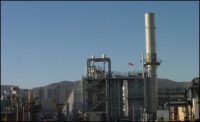Alloys of aluminum are being implemented in heat transfer applications, including hot water boilers, more frequently due to aluminum’s very high conductance of heat. However, aluminum is much more expensive and highly reactive when compared to standard materials used in these applications, such as steel.
While the use of these alloys can provide improvements to heat transfer efficiency for hot water boilers and heat exchangers, a proper water treatment program tailored to minimize corrosion of aluminum while maintaining protection of other metals within the system is critical. The decision to implement such equipment must be made by balancing the potential savings through reduced utilities consumption or shortened cycle times against the increased risk of system damage and premature failure due to the reactive nature of aluminum alloys.
PH Control
The most critical factor to protecting aluminum within a water system is maintaining pH within the stable range for aluminum.
Aluminum forms a naturally protective barrier of aluminum oxide on the metal surface, but this oxide film is only stable in a pH range of approximately 4.0-8.5. Outside of this range, the oxide film can begin to degrade. Once the film degrades, even in a small area, the exposed aluminum beneath will corrode much more rapidly, resulting in what is known as pitting. This pitting is much more aggressive under alkaline conditions, which is typical of most water systems that have been treated with a standard corrosion inhibitor blend. This is because steel and most other metals commonly found in water systems are more stable and protected from corrosion under more alkaline conditions.
Thus, to maintain protection of the entire system, the pH must be controlled within the stable range for aluminum while maintaining an adequate level of corrosion inhibition for any other materials in use.
Corrosion Inhibitors
As with any water system, corrosion inhibitors are required to minimize corrosion rates on the metals within the system. However, when systems contain aluminum, the inhibitor to be used must be selected with careful consideration to ensure that all materials in use are protected.
Any inhibitor selected must be buffered to near-neutral pH, and, dependent upon the pH of the raw water being used to make up the system volume, additional buffering solution may be required to bring pH to within a stable range, typically pH 5.0-8.0. There are many corrosion inhibitor chemistries that will provide adequate protection from corrosion for steel and other metallurgies while maintaining pH within the acceptable range to minimize corrosion of aluminum.
There are additional considerations if the water system also contains copper, brass, or any other yellow metal, as the protection of these materials is also critical to maintaining corrosion resistance of aluminum. Any corrosion of these materials may result in copper ions being released into the water, which, when contacting any aluminum surface, will result in severe pitting. Therefore, appropriate inhibitors must be present to prevent the corrosion of these materials to ensure protection of both the yellow metals and the aluminum.
Galvanic Separation
As previously mentioned, aluminum is a highly reactive metal, being one of the more anodic metals on the galvanic series. As such, it is very important to maintain galvanic separation between aluminum within the system and any other metal, particularly those that are more cathodic than aluminum, namely copper and brass alloys.
If aluminum is directly connected to other metals, a galvanic cell will form, which will result in rapid corrosion. Aluminum, acting as the anode, will experience significant degradation and loss of material, eventually leading to failure.
Steps should be taken to minimize or eliminate the use of copper and brass alloys in a system that contains aluminum wherever possible, or, at the very least, ensure that these metals are galvanically separated from the aluminum. This can be achieved using dielectric fittings or other means of separation, such as a buffer of PVC pipe or other non-reactive material, between the aluminum and other metals.
Conclusion
The decision to implement aluminum boilers, or other heat exchange equipment containing aluminum alloys within a water system, must be made in a thoughtful way. While aluminum may provide potential savings through improved heat transfer efficiency, this must be balanced with the requirements of the metallurgy throughout the system. Great care must be taken to control water chemistry, particularly pH, to ensure any efficiency gains are not negated by damage to other system components. If you have aluminum components within any of your water systems, consult your water treatment professional to ensure that your treatment program is providing the right protection for your system.




